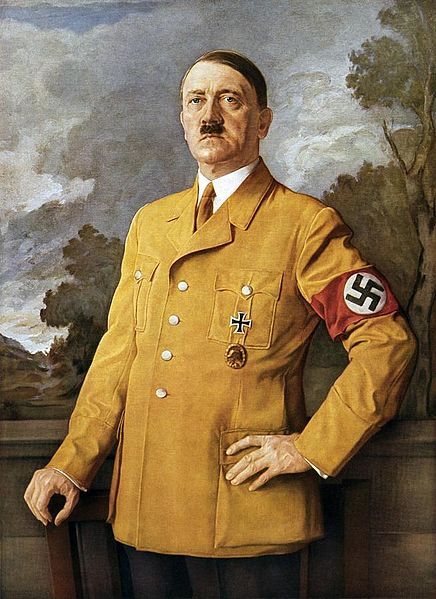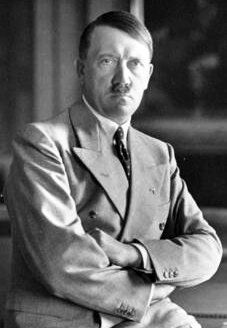Adolf Hitler was a German dictator. He is considered the founder of Nazism, an anti-Semitic and racist ideology based on the superiority of the Aryan race.
At the end of the First World War, Germany plunged into a social, economic and political crisis. Over the next twenty years, Hitler increasingly established himself as a providential savior, with the help of propaganda. Starting out as leader of the National Socialist German Workers' Party (NSDAP), he rose through the ranks to become head of state, Führer and Chancellor of the Reich.
He is best known as the instigator of the Second World War, for his territorial conquests and for committing numerous war crimes and crimes against humanity, resulting in the deaths of several million people.


-
1889: Adolf Hitler is born on April 20, in Austria-Hungary.
-
1921: Starting out as a public speaker, he soon becomes leader of the Nazi Party. The following year, his supporters began calling him Führer (leader).
-
1923: In November, Hitler and a few collaborators organize a coup d'état. It fails, and Hitler is arrested and sentenced to 5 years in prison.
-
1925: He publishes Mein Kampf (My Struggle), in which he explains, among other things, the ideology of Nazism.
-
1933: Thanks to an alliance with the Conservative Party in the last elections, Hitler becomes Chancellor of Germany on January 30.
-
1934: To resolve remaining tensions within the government, Hitler has his opponents imprisoned and murdered between June 29 and July 2. This period is known as the Night of the Long Knives.
-
1935: For the first time, Hitler violates the peace terms of the Treaty of Versailles that ended the First World War. He reintroduces compulsory military service and increases the size of the German army by 500%.
-
1938: Under pressure and threats from Hitler, Austria is annexed to Germany in a referendum.
-
1939: Despite a non-aggression pact signed a few years earlier, the Führer's troops invade Poland on September 1. This aggression triggers the entry into the war of several countries, including France, England and, ten days later, Canada. The Second World War begins.
-
1942: In a Berlin villa, some 15 high-ranking German officials meet to decide how to implement the “Final Solution of the Jewish Question” ordered by Hitler. The meeting, known as the Wannsee Conference, lasts less than two hours.
-
1942: At a ceremony in the Reichstag (Germany's parliamentary assembly), Hitler is officially granted the right of life and death over all German citizens.
-
1942: After conquering France, Belgium, Romania, Greece and Yugoslavia, Hitler launches an attack on the USSR. A few months later, his defeat at Stalingrad, coupled with the United States' entry into the war, marked a turning point in the Second World War. From then on, Hitler's mental and physical health declined until the end of the war.
-
1944: On June 6, the Allies land on the beaches of Normandy, France. Sustained fighting liberates Hitler's conquered peoples and pushes back Germany's borders.
-
1944: In a meeting at the Wolfsschanze (“Wolf's Lair”), Hitler is the target of an assassination attempt. It was the sixth in six years. He is only slightly wounded.
-
1945: On April 16, as Soviet troops launched the Battle of Berlin, Adolf Hitler had already been living in his bunker for several months. On April 22, the Führer has a terrible outburst during a strategy meeting. In the end, he admits he has lost the war and speaks of his desire to end his life.
-
1945: Hitler marries the actress Eva Braun on April 29. He then dictates his wills (one political, the other private) to his secretary. The next day, with the Red Army only a few hundred meters from the bunker, Hitler and his wife commit suicide.
-
1945: On May 8, Germany capitulates, marking the end of the Second World War in Europe.